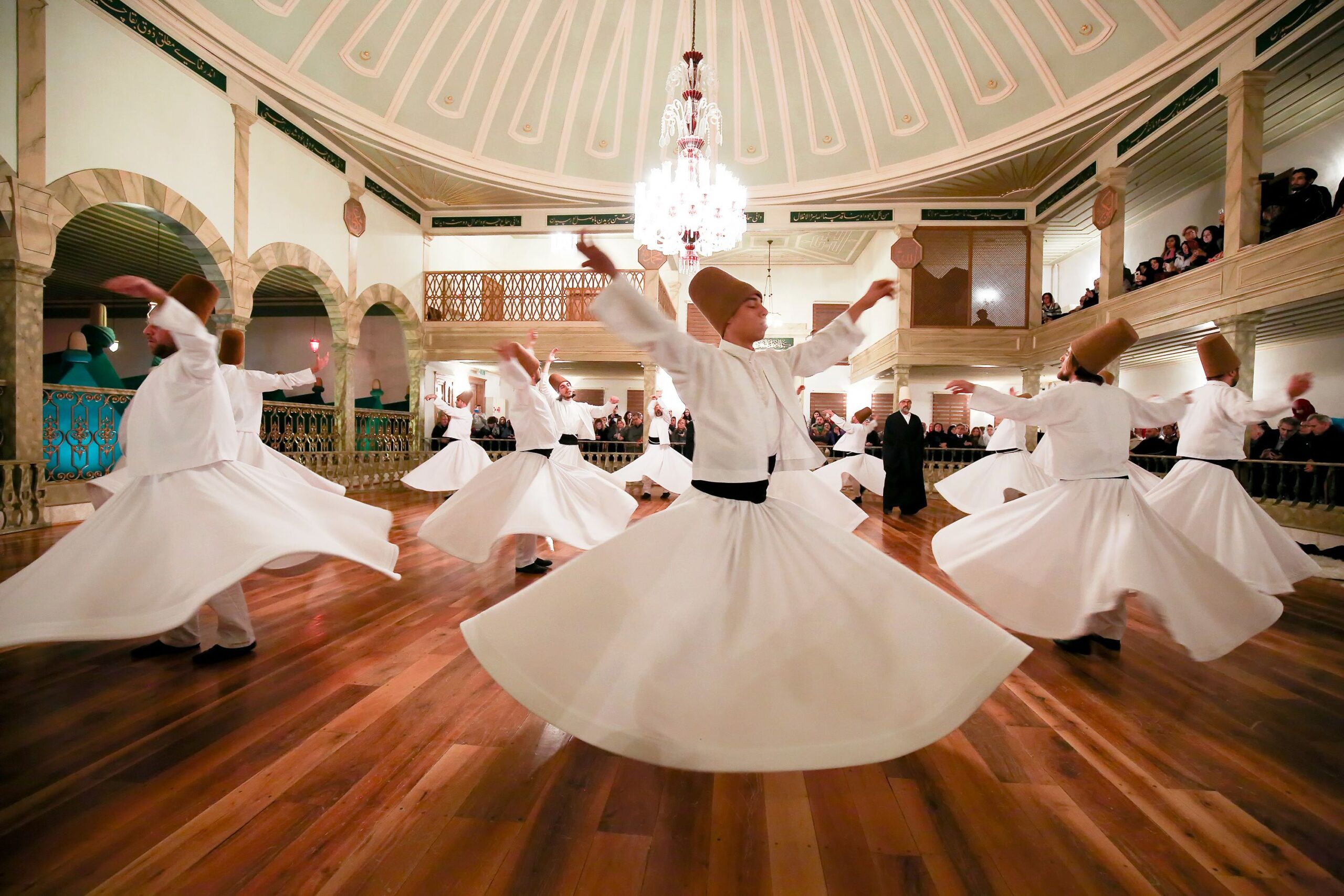From Belly Dance To Sufi Whirling: Discover Turkeys Rich Dance Traditions

Turkey’s heritage and fascinating history are celebrated via its traditional dances. These dances go beyond art. People connect with ancestral roots and share memories and feelings. From belly dance sensuality to Sufi traditions’ spirituality each dance symbolizes Turkish culture.
Belly Dance Oryantal
Origins And Cultural Significance
Middle Eastern belly dancing or Oriental belly dancing has influenced Turkish culture. It originated in ancient times and has varied forms around the area. Dances were part of fertility rituals, festivals and festivities. They became assimilated into Turkish culture. Festivals and special events in Turkey include Oriental dance. It represents femininity and art. Turkey’s rich Middle Eastern history and culture are reflected in the dance. Its existence in Turkish culture shows ancient and contemporary influences.
Characteristics And Performance
Fluid and complicated motions define Oryantal. Undulating and rhythmic hip abdomen and body movements dominate the dance. Sequins and coins on performers’ outfits enhance their motions and appearance. Oryantal traditionally features Middle Eastern tunes and modern fusion. This dancing genre is used in professional stage performances and casual gatherings. Asian dancers wow listeners with elegance and sensuality interpreting music via fluid and expressive movements. Music costuming and choreography create a captivating performance that showcases the dancer’s talent.
Cultural And Artistic Impact
Oriental influences Turkish culture and art worldwide. This rich manifestation of cultural heritage and personal identity is in Turkey. Turkish music theater and cinema have been impacted by dance. Oryantal has shown the beauty and intricacy of Middle Eastern dance worldwide. It has influenced artists and entertainers worldwide promoting cultural diversity. The dance celebrates femininity and movement by focusing on rhythm and body expressiveness. Oryantal is a potent emblem of cultural pride and creative expression demonstrating its lasting popularity.
Folk Dance Halay
Origins And Cultural Significance
Haley is a culturally significant Turkish folk dance. Since its Anatolian origins it has been part of Turkish society for centuries. Haley has performed at weddings, community events and festivals. The dance symbolizes Turkish togetherness. Halay traditionally strengthened social relationships and celebrated cultural values. It represents communal life and social connection, not simply dancing. Dance has changed yet it remains a fundamental part of Turkish culture.
Characteristics And Performance
Haley is noted for its vibrant activity. Participants clasp hands or connect arms in a circle and move coordinated. The zurna reed flute and davul large drum accompany the dance. The dance is fast and rhythmic with chants and cries interspersed. Halay performances are spontaneous and communal with dancers adding to the excitement. The dance rhythm and group involvement promote unity and joy.
Cultural And Social Impact
Hala has a significant cultural and societal effect on Turkey. It brings people together in celebration and community. The dance reinforces social relationships and cultural legacy via unity and shared identity. Haley represents Turkish community spirit and shows how traditional traditions may foster relationships. Its participation in social occasions emphasizes cultural preservation and celebration. The dance continues to convey Turkish delight, perseverance and devotion to cultural preservation.
Zeybek Dance
Origins And Cultural Significance
Aegean Turkey zeybek dance is traditional. It stems from local warrior customs. Valiant local warriors traditionally performed Zeybek. Regional resistance and struggle are reflected in the dance. It represents the Aegean people and their history. Zeybek became a traditional dance performed on social and cultural occasions. It honors historical heroes and the people spirit. The dance symbolizes strength and pride in Aegean ancestry.
Characteristics And Performance
Powerful and dramatic motions define Zeybek. Dancers demonstrate strong jumps, kicks and stomping. Traditional instruments like the balama, a Turkish lute and spoons create a rhythmic and dynamic mood for the dance. Traditional vests and sashes match dancers’ strong motions. Dancers must be agile and robust to execute Zeybek. Solo performances showing off dancers’ skills and expressions are standard. Dynamic gestures and traditional melodies form an intense cultural presentation.
Cultural And Historical Impact
Zeybek is important to Turkish culture and history. It symbolizes Aegean bravery, strength and perseverance. This dance honors the region’s warrior traditions and historical conflicts. Zeybek symbolizes Turkish nationalism and perseverance. Its continuing appearance at cultural events and festivals shows its commitment to historical preservation. Aegean culture is expressed via dance which connects modern audiences to its rich past. Zeybek is essential to Turkish culture due to its tremendous movements and historical importance.
Sufi Whirling Semah
Origins And Spiritual Significance
Semah or Sufi Whirling is a spiritual dance. It is linked to the Whirling Dervishes owning the Mevlevi Order. Rumi, a 13th century Sufi mystic and poet, taught the technique. Semah represents spirituality and meditation. The soul seeks divine oneness via it. Sufi ceremonies center on dancing signifying spiritual enlightenment and transcendence. Semah seeks spiritual bliss and inner tranquility via spinning.
Characteristics And Performance
In semah white robed dancers whirl in circles. Extended arms symbolize receiving heavenly favour and distributing spiritual benefits in the dance. Dancers move rhythmically and continuously creating unity and harmony. The event features traditional Sufi music and chants to enhance spirituality. The dance circle symbolizes the universe and life cycle. Dancers must concentrate and control themselves to perform searches displaying their dedication. Visitors are invited to meditate throughout the visual and spiritual performance.
Cultural And Spiritual Impact
Semah is culturally and spiritually significant. It is essential to Sufi traditions and connects the physical and spiritual worlds. The dance promotes inner serenity and spiritual harmony expanding Sufi mysticism. Semah promotes and preserves Sufi culture. Its performances reveal Mevlevi Order spirituality to worldwide audiences. The Sufi tradition values the dance capacity to transmit profound spiritual themes via movement. Semah symbolizes spirituality and cultural continuity representing Sufi traditions.
Conclusion
Turkish traditional dances are essential to commemorating its rich culture. Each dance genre reveals Turkish history, communal values and spiritual practices. These dances are more than shows from sensual belly dancing to energetic Halay and mystical Semah. They embody Turkish culture and identity. These ancient dances keep individuals connected to their origins and enhance their culture.






